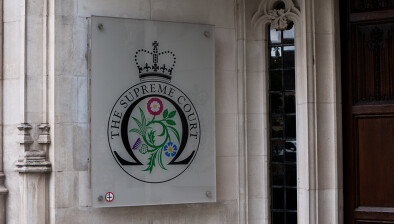Review: Reasoning on the ‘reasonable person’

Robert Shiels looks at the “story of law’s reasonable person” — one that has “many beginnings and no end”, according to Professor Valentin Jeutner, of Lund University, Sweden.
Identifying the concept of a “reasonable person” is not an easy task, given, as this professor discovered, there are over 250 statutes and 10,000 court cases in which there are references to the “reasonable man”.
In short, this is a discursive study on a common theme of the variously described person, formerly a man on a variety of vehicles across legal systems, with conclusions of very general application.
Professional historians are apt on looking at a new book within their area of expertise and check first the bibliography to see what is there and, perhaps more importantly, what is not there.
Similarly, legal academics may start by looking at the contents page and the list of cases, and noting any restriction of jurisdiction.
In that regard, some may be slightly dismayed to see “the Scottish Sentimentalists” (Hume and Adam Smith) feature in the chapter headed “The Reasonable Person in Birmingham”.
The Table of Cases commences with England and Wales, and several of the Scottish cases cited are listed at the end under “Other Jurisdictions”.
Glasgow Corporation v Muir and others [1943] AC 448 (HL) is listed under “England and Wales”. Can it be certain that there is a universally reasonable person across the United Kingdom, and in Ireland?
The professor opines that the exact features of the perspective of the reasonable man are notoriously difficult to define. He sees there to be broadly three interpretations. One argument is that the perspective of the judge or jurors in a particular case is what matters. Another is that the standard to be applied is to reflect the attitude of society as a whole.
A third view is that it the “reasonable person’s perspective” should be that of “the accused” in a particular case, or that of the original parties to a contract. These three aspects are considered in detail in the later chapters.
The professor argues that the most important aspect of “the reasonable person’s perspective is that it is the perspective of another. Whoever it is, wherever it lives, whatever it looks like, the reasonable person is not you.”
The professor notes that “apart from its existence as a legal concept, the reasonable person has gradually acquired the status of the common law’s most legendary character”.
The range of material which has been studied in order to find the reasonable person is commendable, partly as the concept of the reasonable person varies across legal fields.
While common law authorities are considered extensively there are studies of various philosophical and jurisprudential texts.
There is rare and commendable attention to legal authorities from the Central African Federation of the 1950s where the standard of the reasonable man was considered and applied.
Some colonial courts transplanted into their systems of the whole notion and nomenclature of the reasonable man as stated widely then to be the man on the Clapham omnibus.
Other courts there adapted that standard and introduced local juries, or consulted appointed assessors for a cultural insight as to the mores of litigants or accused.
In the modern era, the reasonable man was discussed as a test or standard for assessing the extreme actions of the executive-level accused at the Nuremberg trials.
That aspect is developed and attention is also given by the professor to the concept of the reasonable military commander and the issues arising where there is no empathy for others.
The concluding aspects to this commendably discursive study are the reasonable person in a world of robots and artificial intelligence, along with normative discussion of the variable rules in modern life.
Professor Jeutner argues that the reasonable person is, at heart, an empathetic perspective-taking person striving to take another person’s perspective when assessing their own or another person’s conduct.
The perspective of another is discovered by means of empathy, by deciding what others might feel in a particular situation. This might be thought of as highly subjective and generously so.
At any rate, thus construed, the figure of the reasonable person ought to be able to assist, possibly, in the making of more accurate judgments in an increasingly diverse world.
Perhaps there is too much space given by the professor to collateral matters such as the history of the omnibus, and Clapham as a place in the mid-Victoria era and the sort of people living there.
The life of Baron Alderson, the judge to whose judicial opinion one can trace the first reference to the reasonable man, is explained extensively, and arguably too much so.
Perhaps the reasonable person will remain mythical, “all things to all scholars”, as the embodiment of an objective standard to be varied according to the place and time, legal subject matter and issues.
This legal biography of a concept is not intended to settle matters, but it is bound to be of interest to many scholars and practitioners in fostering, at the very least, thought and discussion of a complex phenomenon.
The Reasonable Person: A Legal Biography by Valentin Jeutner. Published by Cambridge University Press, 252pp, £95.









